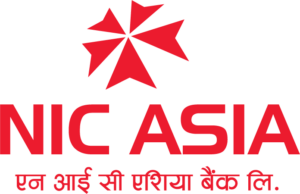Digital banking is all about the delivery of banking services over the internet. The approach is modern and incorporates the contemporary requirements of virtual banking above physical banking.
Digital banking integrates several digital channels operated through the internet and offers digital banking services via mobile, interactive voice response, third party mobile applications like Viber and website.
Why Digital Banking:
As everything evolves and requires advancement, the banking sector cannot remain apart. Digital banking is an integrated form of online banking as a result of the requirement to advance towards risk reduction, efficiency enhancement, and serve customers in a better way. The digitization of banking not only has made the entire process smooth but also customer satisfaction has gone up.
A chart below helps you get the growth rate of Digital Banking above regular banking, basically with:
- Banking Efficiency has gone up by 31%
- Total growth of banking transactions has gone up by 30%
- The total banking transactions have been secured by 23%
Advantages of Digital Banking
- Digital banking makes banking time and cost-efficient as it can be operated without having to visit the bank physically.
- Makes banking hasslefree by bringing major banking facilities right in front.
- Saves from conventional banking insecurities like theft, robberies, and check fraudulent.
- Help get additional banking features possible by the advancement in technologies.
- Reduces recurring banking costs caused by tangible goods.
Digital Banking in the Context of Nepal
Digital banking started back in early 2000 in Nepal with the introduction of internet banking. However, it took quite a long for the approach to expand and impact regular lives. The infrastructure, awareness, and usage have increased immensely so far. Today many people are using online banking fundamentally via mobile banking and internet banking. People in urban and suburban areas are the major participants in this context.
However, the primary sector that digital banking should have the most impact on, i.e. the people in remote regions, is yet to be explored.
According to an oversight report from Nepal Rashtra Bank, the number of mobile banking users is 8,347,187 in the year 2075/76. Similarly, the number of internet banking users in the same year is 917,344 making the growth of 64% and 10% respectively.
Many people, especially the professionals are identifying the importance of online banking and hence contributing to the growth of digital banking awareness.
How to use digital banking safely?
Banking transactions on its own is a sensitive aspect. Managing it through several types of online banking makes it even riskier. Regardless of ample development in technology and infrastructure, one cannot rely merely on the governing bodies and must be aware of how to use digital banking safely.
The given safe digital banking tips will help you understand the important measures for safe internet banking:
- Consider Login information as an extremely important factor: Digital banking is all about accessing your account through the internet. To do so, you have to log in with pre-defined login credentials. If you casually manage the information, share them, or lose them, your account is on absolute high risk. Make sure your login details are safe. The best practice is to change your password frequently and make it stronger.
- Avoid using public wifi for a transaction: Digital banking safety must be your priority and any sort of transaction must be disciplined. Make sure none of your transactions are done on the public internet (wifi hotspots) like airports, hotels, or similar places. Transaction done on public wifi are likely to leak your data as an unauthorized person can breach into your device by accessing it.
- Use two-factor authentication: Two-factor authentication is a new safety measure. What it does is, provides you complete control over your login by giving you an additional layer of security. With two factor authentication, you can restrict possible unauthorized access by asking for the confirmation of login with an additional requirement, for example, a PIN code in your SMS, or an access code in your email.
- Avoid suspicious emails: Emails can be extremely dangerous if someone wants to get unauthorized access to your accounts. There can be phishing emails pretending to be official from the financial institution and asking for login details. Never trust any email asking for login details as no organization does so. Never provide any detail and click any links on such emails.
- Monitor your accounts regularly: Being attentive and monitoring your account frequently gives you a great edge over the vulnerabilities. There are multiple ways, you can track your account regularly, like SMS banking, where you receive notification for every financial transaction in your account and going through your statements periodically.
Performing safe digital banking is our responsibility and we cannot afford to be insensitive on this important side. Carrying out some small yet important safety measures can save us from big problems. Why not contact us today and apply for digital banking.
Rest assured we make sure every bit of your digital banking is safe and we equally help you understand the practical safety measures as discussed above.
Thank you for reading the article.
Feel free to share it with your friends if you find it informative.
Share in


Leave A Comment